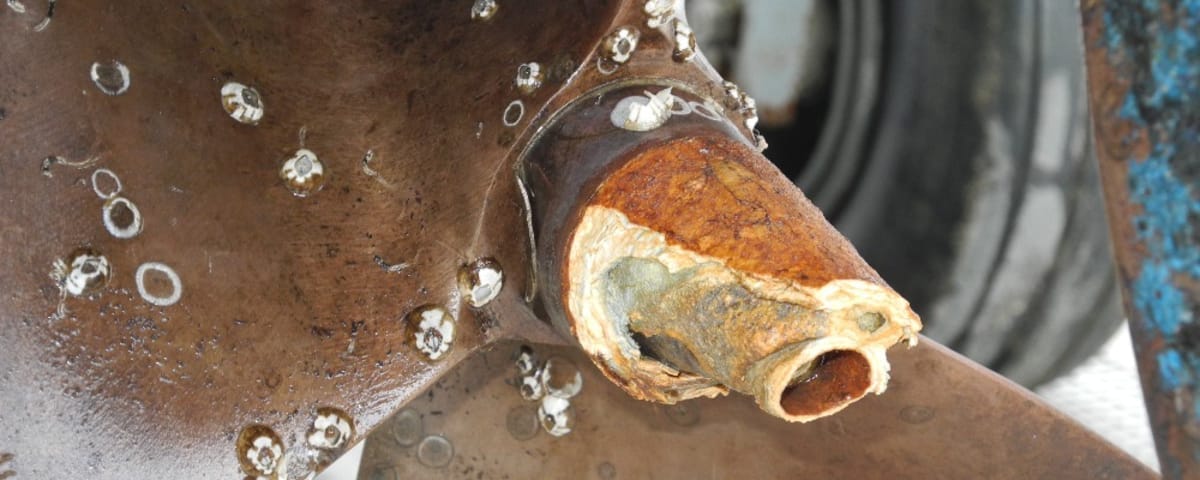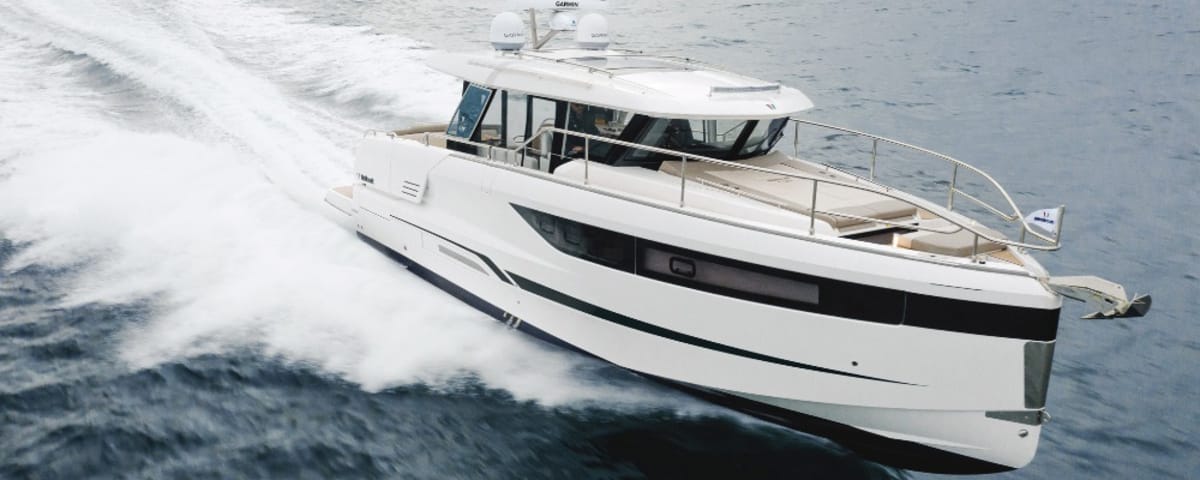Protecting Metal Parts on Your Boat
When you haul out for maintenance, after cleaning the hull and before applying antifouling paint, several components need inspection. Among these are anodes, which protect submerged metal parts (engine mounts, propellers, through-hull fittings, etc.) and the cooling water circuit from corrosion. Corrosion affects all boats with metal parts in contact with water, not just alloy or steel hulls. It’s unavoidable, but anodes offer a solution by being more susceptible to corrosion, thus protecting other metal components.
Corrosion and the Role of Anodes
Corrosion is a natural phenomenon that occurs when two different materials are immersed in a conductive liquid, such as seawater, brackish water, or even freshwater. One material acts as the anode and corrodes, while the other acts as the cathode. On a boat, submerged parts are made of materials like brass, steel, and stainless steel, each with different electrical potentials. The material with the lowest potential corrodes fastest, acting as the anode. To prevent this, anodes with an even lower potential are attached to the boat’s metal parts (the cathode). These “sacrificial anodes” protect the other metals by corroding instead.
© Albert Brel
Choosing the Right Anodes: Composition and Quality
Several types of anodes are available, including zinc, aluminum, and magnesium. Zinc anodes (potential -1.04 volts) are the most common and suitable for saltwater and brackish water. Magnesium anodes (potential -1.5 volts) or aluminum anodes are preferred for freshwater. However, aluminum anodes will quickly degrade in seawater. Aluminum alloys (potential -1.1 volts) are used for alloy hulls, engine mounts, and outboard motors. Generally, the metal with the highest potential is the most effective, such as magnesium (-1.5 volts). However, magnesium anodes cannot be used in saltwater or on aluminum mounts; they are reserved for freshwater environments.
An effective anode must be made with care and high-quality, controlled materials. Some boaters attempt to make their own anodes by melting down scrap zinc (gutters or old anodes). This is not recommended because the quality of the metal is unknown. An anode should be made of zinc with a minimum purity of 99.996% and an iron content of less than 0.0014% for maximum effectiveness. Some anodes on the market meet these criteria, while others do not. How do you choose? Visual inspection or price does not guarantee quality. The only factor to consider is compliance. For example, Vetus anodes are referenced for zinc MIL-A-18001K and for aluminum the American reference MIL-A-24779. The solution is to take stamped products or ask the seller for the origin.
© Albert Brel
Anode Placement for Optimal Protection
On polyester boats with an inboard engine, the points to protect are the shaft or engine mount, the propeller and its bracket, rudder fittings, valves, and trim tabs.
On a steel hull, place anodes near the propeller (shaft and bracket) and rudder. A 10-meter boat requires 4 to 5 kg of anodes to protect the entire submerged surface.
Specific anodes and “pendanodes” are available for light alloy hulls. Pendanodes (aluminum anodes) are mobile anodes placed around the boat in ports to create a corrosion barrier (2 on a boat up to 12 meters, 4 between 12 and 14 meters).
Engine mounts of all types (Z-drive, S-drive, etc.) and bow thrusters are almost always made of aluminum alloy. Use specific aluminum anodes to protect them.
Outboard motor manufacturers provide anode locations. It is essential to respect these locations and use the corresponding anodes for the motor.
Some inboard engines have anodes, usually placed on the water circuit. Check these annually and replace them if necessary.
© Albert Brel
When to Replace Anodes
Anodes are designed to degrade over time. If an anode doesn’t wear down, it’s as concerning as if it wears down quickly. In the first case, another boat component (valve, propeller, shaft, mount, etc.) is acting as the anode. In the second case, it usually indicates an electrical leak. It’s difficult to quantify normal wear, as it depends on the boat, its environment, and the port. On a boat that remains afloat continuously, anodes should be sufficiently corroded (60 to 70%) to warrant annual replacement. If wear is abnormal (rapid or no wear), inspect submerged metal components (propeller, shaft, mount, valves, etc.). For example, a bronze propeller that turns reddish and makes a crystalline sound when tapped with a metal object indicates corrosion, making it dangerous and prone to breakage. The same applies to valves and through-hull fittings, where breakage can lead to water ingress. These problems often indicate an electrical leak, which requires prompt attention.
© Albert Brel
Tips for Anode Use
On a boat that remains in the water continuously, normal wear is around 60 to 70%. Replace the anode during annual maintenance. Follow these seven points for effective anode use:
- Ensure perfect contact with the parts to be protected.
- Do not apply any product, such as grease, between the anode and the part to be protected.
- Always use the hardware provided with the anodes for attachment.
- Never paint or cover anodes with antifouling paint.
- Anodes must always be in contact with water.
- If using pendanodes (mooring anodes for alloy boats), ensure they contact a metal part of the hull, such as the rubbing strake.
- Brush anodes to remove any fouling or oxidation.
Enjoyed this post by Thibault Helle? Subscribe for more insights and updates straight from the source.


